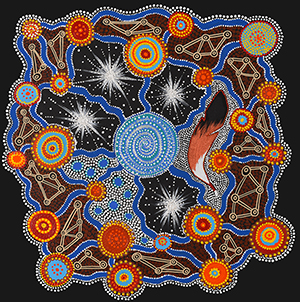First Nations hub
NOTE: First Nations people should be aware that this page may contain images of deceased persons.
South Australia Police (SAPOL) understands that by working in partnership with First Nations communities and building relationships of mutual respect and understanding we can create safer communities for all South Australians.
To progress this, we commit to:
- Fostering mutually respectful, positive relationships between First Nations communities and police.
- Embedding a deeper understanding of First Nations cultures.
- Genuinely acknowledging the impact of policing on the experiences of First Nations peoples.
- Increasing the number of First Nations employees in the workplace.
South Australia Police acknowledges and respects Aboriginal peoples as the state's first peoples and nations, and recognises them as traditional owners and occupants of land and waters in South Australia. Further, we acknowledge that the spiritual, social, cultural and economic practices of Aboriginal peoples come from their traditional lands and waters, that they maintain their cultural and heritage beliefs, languages and laws which are of ongoing importance, and that they have made and continue to make a unique and irreplaceable contribution to the state.
We acknowledge that Aboriginal peoples have endured past injustice and dispossession of their traditional lands and waters.
The South Australia Police Reconciliation Action Plan (RAP) 2024-2026 supports existing initiatives and encourages adaptive change, ensuring that SAPOL incorporates the principles of reconciliation into business as usual today and into the future.
Our RAP has been formally endorsed by Reconciliation Australia and is our third Innovate RAP.
If you have any questions or would like more information about SAPOL’s RAP please email SAPOL.reconciliation@police.sa.gov.au
Read about some of our recent activities along our reconciliation journey:
- Creating a tight-knit community - The ‘Yarning Circle – Ngathuwi Boandiku Mraatu’, Mount Gambier Police – Blueprint Issue 2 2023, page 34.
- Youth program packs a punch – Kornis Mendhamaldi Boxing Fitness Group, Murray Mallee Local Service Area – Blueprint Issue 1 2023, page 32.
SAPOL values community engagement and collaboration as a foundation to delivering responsive, community-centred policing services that enhance our prevention first focus.

Artwork by
Sergeant Danielle James, Nauo woman
Waldya Warna-Bini Ngamana - Eagle Coming From The Sea
Waldya came from the sea and created the many water holes to help the communities thrive. Waldya is a Lore man and his ceremony is celebrated with showing off his feathers. Waldya foot print is marked by the four stars seen in the night sky as he flies over the communities, all of which are different and include people from different Nations. SAPOL (the blue line) flows through all of the communities just as Waldya flies above them. Together the law and the Lore work in partnership to help, guide, protect and serve the community.
Waldya the Eagle was a powerful Lore man and had many adventures along his journey. Waldya came from the sea and flew high into the sky amongst the clouds, up towards the sun. The sun was hot and burning; Waldya saw the other animals and birds were thirsty too so he flew straight down into the Earth as hard as he could and broke the hard rocks on the surface. By doing this Waldya created a water soak and fresh water began to flow out. He saw the animals and birds were now able to drink the cool water so he kept flying throughout the Eyre Peninsula breaking open the hard surface and creating more waterholes.
As Waldya travelled to Nauo country he was speared by a warrior. As he flew away to make is escape Waldya’s blood fell onto the rocks at ‘Murphy’s Haystacks’ located between Streaky Bay and Port Kenny; this caused the rocks to turn red. From here he flew south towards the Marble Ranges where he had another battle with a native wild cat. Waldya was now very wounded, he fell to the ground near Tulka on the Eyre Peninsula where you can still see his body in the hills that face Boston Bay.
Eventually Waldya’s spirit travelled up to the night sky and became a part of the constellations. His foot print forms the Southern Cross and can be seen clearly in the sky across South Australia.
In June at dusk, Waldya’s foot is low on the horizon. This signifies the beginning of the eagle’s breeding season, and when positioned lowest on the horizon at dusk it also marks the winter solstice. This part of Waldya’s story teaches us about Lore, being helpful to others, where to find water, navigation and seasonal change.
Join us
SAPOL offers First Nations Peoples the opportunity to join a workplace that embraces diversity. Click below to find information on becoming a: